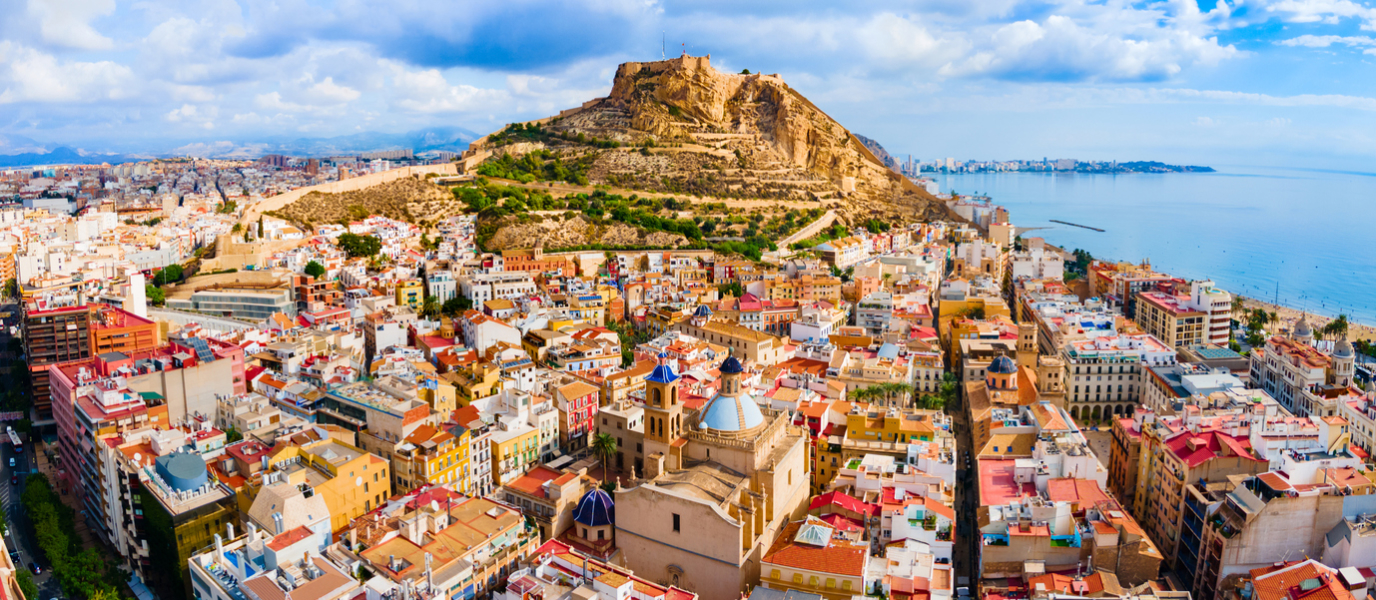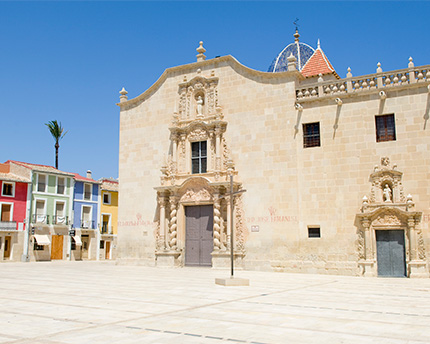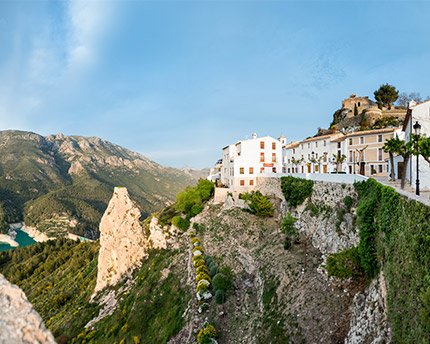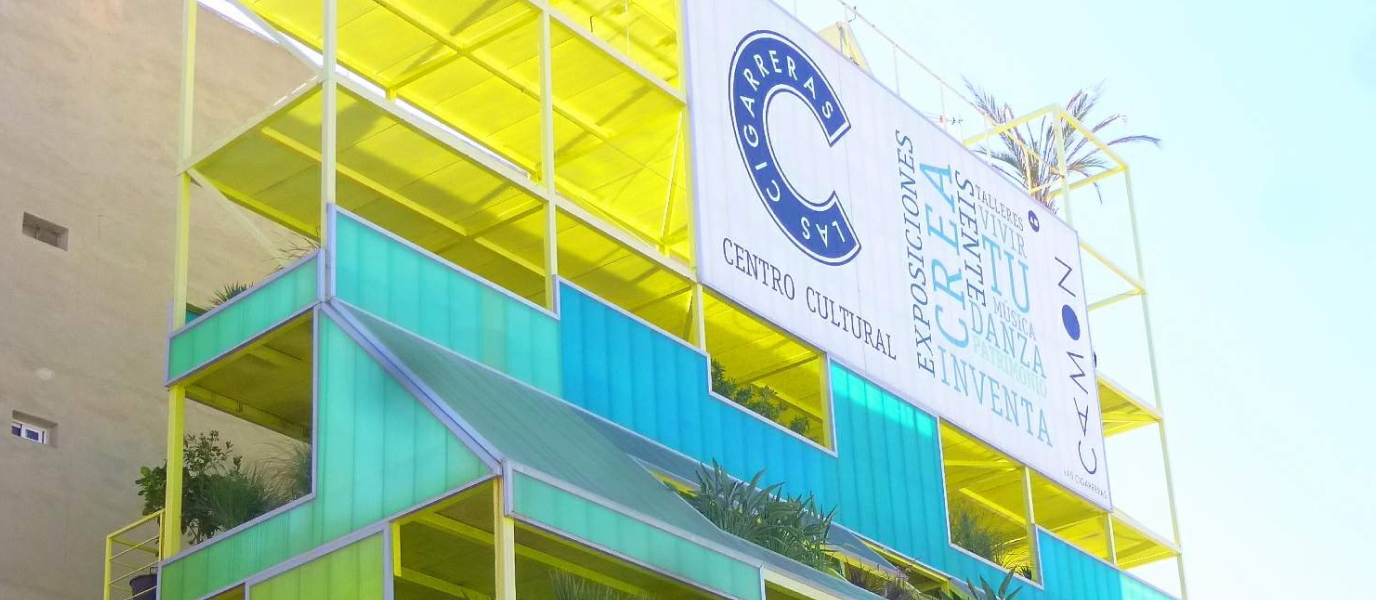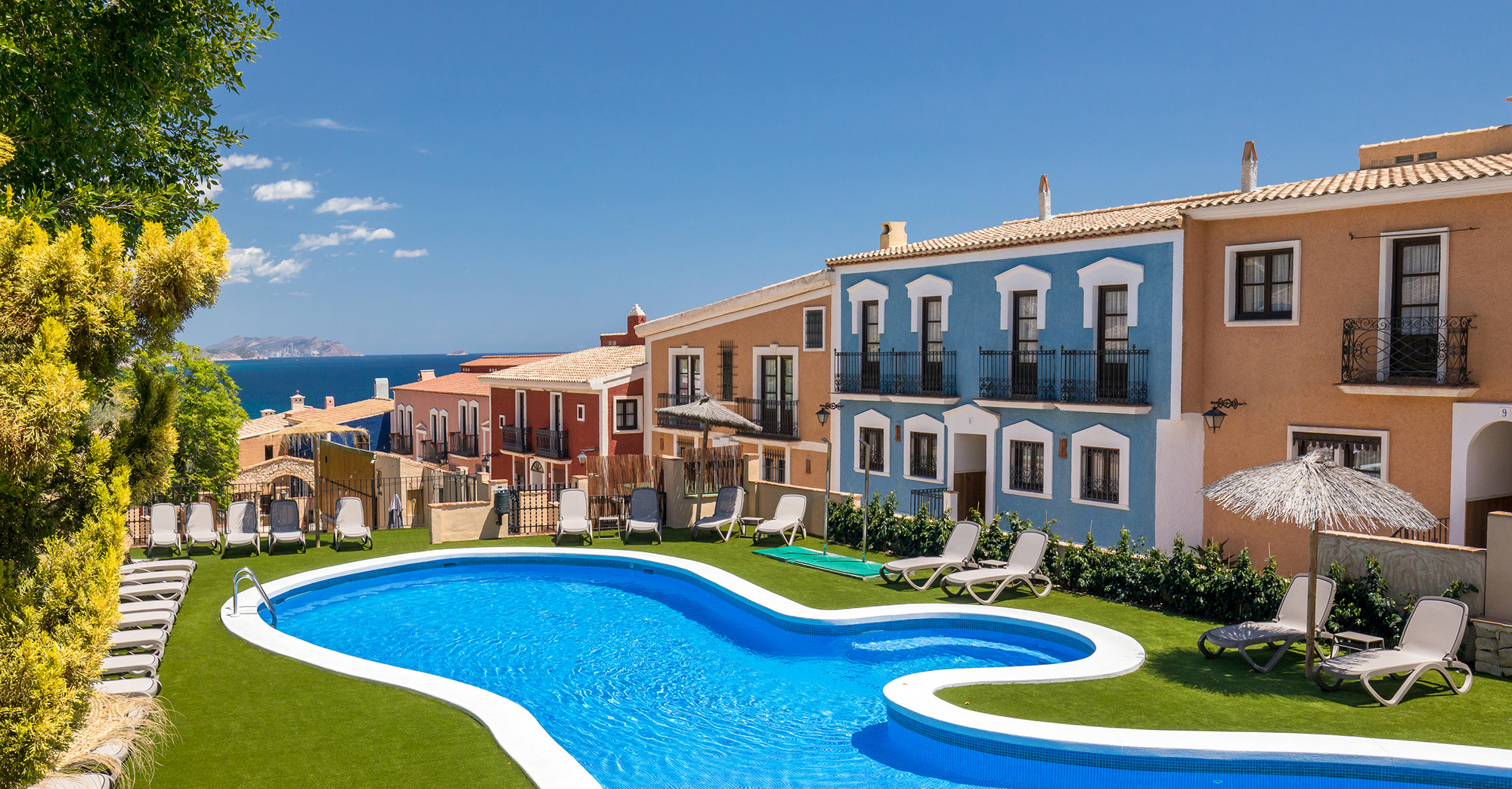When we think of Alicante, the first things that come to mind are its spectacular beaches and delicious cuisine. However, behind this well-known image lies a province with towns and cities to visit, a variety of beaches and coves where relaxation is guaranteed, as well as plenty of nature suitable for even the sportiest of visitors.
Read on because we’re going to tell you everything there is to see in Alicante, the essential places you must visit, and those magical spots that few people talk about.
TOWNS AND CITIES IN ALICANTE
The province of Alicante is home to many treasures scattered throughout the province. Although the best known towns and cities are to be found on the coast, we encourage you to explore inland because you’re sure to be surprised. Some of these better-known places are the ones people will say that you have to see in Alicante, but others are gems that in the low season you’ll essentially be able to enjoy on your own.
Related experiences
Alicante city, a small but complete capital
The capital of Alicante isn’t known for its monuments, but it does offer a fantastic quality of life. When you visit it, you’ll see that it does have interesting sights and that it’s certainly a city where life is great. Some of Alicante’s must-see sights include the castle of Santa Bárbara, on Mount Benacantil, and the Santa Cruz neighbourhood, which is home to places such as the co-cathedral of San Nicolás and the Santa Cruz hermitage. Continue your cultural tour at the Archaeological Museum and stop off at the Central Market for an aperitif. And finally, we’ll let you head to the Explanada de España to cool off with a horchata before continuing the day on the Postiguet or San Juan beaches.
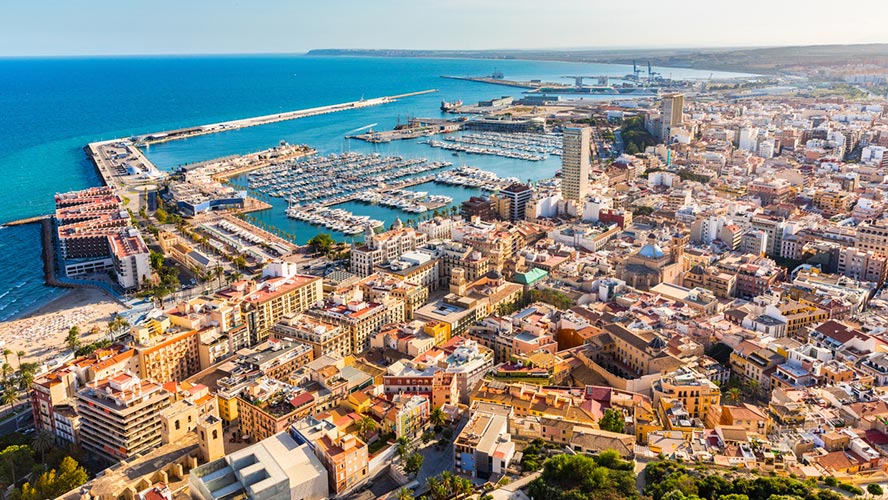
Benidorm, tourism all year round
If there’s one destination that never goes out of fashion, it’s Benidorm. No matter how many jokes you may hear about pensioners in this city, the truth is that it has a tourist offering that has remained intact for decades. What does Benidorm have to offer to have such a loyal tourist following? A great climate almost all year round, beaches, lively nightlife, places for shopping, restaurants with varied cuisine, and the chance to go on day trips in the surrounding area. Some other activities that we recommend are sea-related, you could try sailing or scuba diving, or go climbing or play golf.
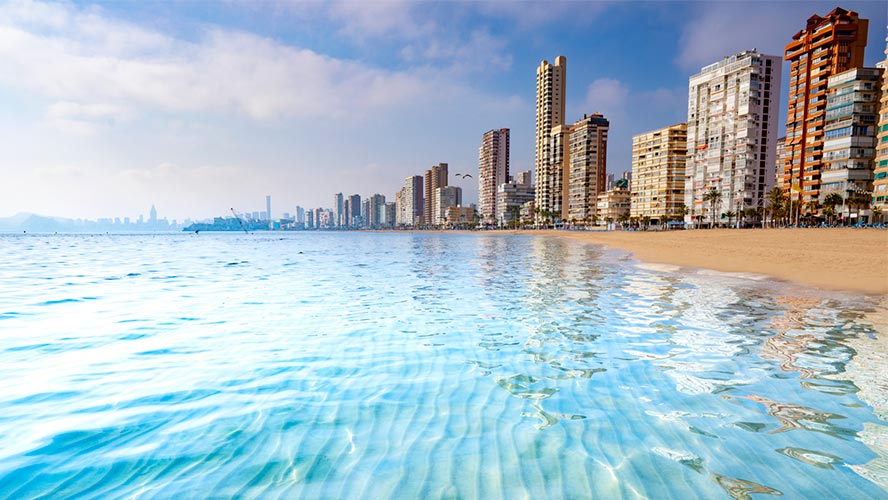
Denia, relax on the coast
The coastal town of Denia has a charming historic quarter that can be explored in just a few hours, so take your time to stroll through its streets and visit the castle and the church of Nuestra Señora de la Asunción. Don’t miss the fishermen’s quarter of Baix la Mar or the Denia Market, where you can buy fish and seafood fresh from the fish market.
To complete your visit, you can stroll along the 3-kilometre long Les Marines beach, which starts in Baix la Mar and ends at Les Bovetes beach. And if you still have time and some energy left, the Denia Greenway, which runs along the old FEVE line that used to link Denia with Carcaixent, as well as the Montgó Nature Park await you.
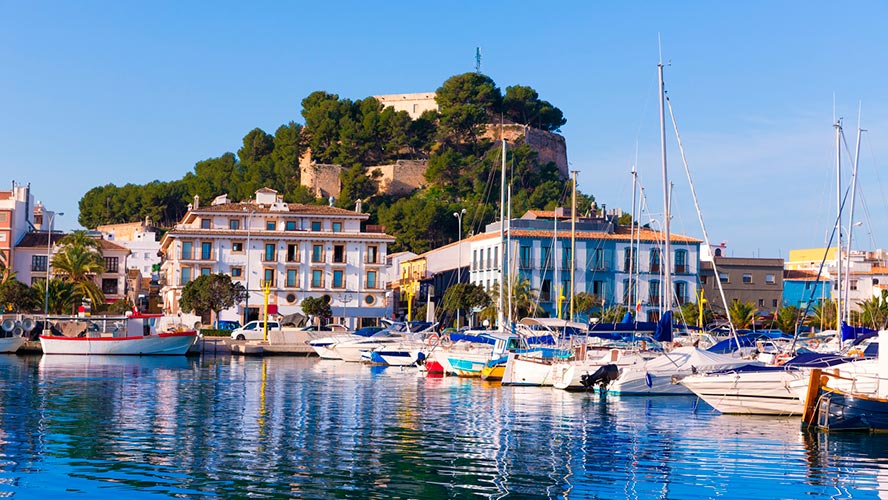
Calpe, walks by the sea
With the Peñón de Ifach in place as Calpe‘s permanent guardian, nothing can go wrong. In this town everything seems to recover its normal rhythm. The town is ideal for a walk around its 15th-century walls, the Peça tower and the History and Archaeology Museum. But we also suggest you visit the fish market, where you can watch an auction, the salt flats, which are home to flamingos and migratory birds, as well as the Baños de la Reina, which are next to the salt flats and are part of Roman ruins.
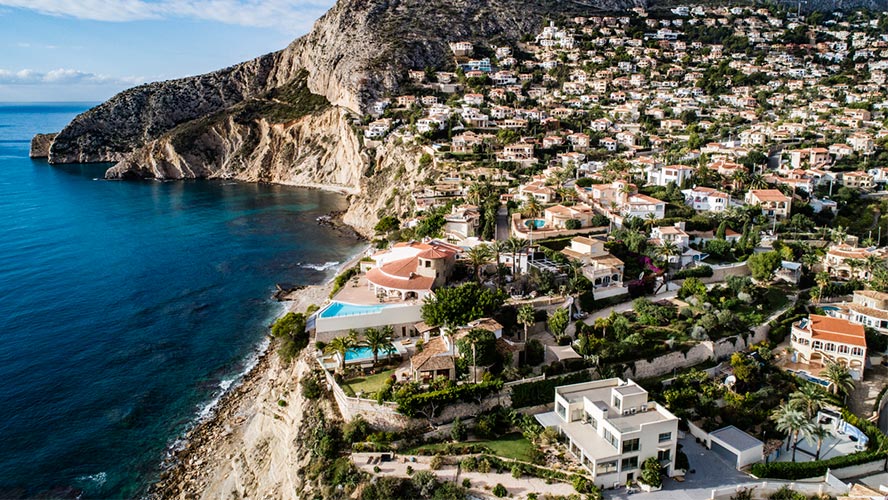
Jávea, the beach and day trips
We can’t hide the fact that we love Jávea (or Xàbia), a small coastal town that invites you to wander through its historic quarter and explore its winding maze of streets. Along the way you’ll come across the food market, the church of San Bartolomé, and its Town Hall, in an 18th century building. In the surrounding area, there are also certain sights that would be a shame to miss, such as the 16th century Gerro tower, Cape San Antonio, the Nao lighthouse, and the surprising row of Jávea’s windmills. Nor should we forget to mention how lovely it is to have a swim in this Mediterranean sea with its warm, crystal-clear waters, and also we recommend a visit to the Arenal beach.
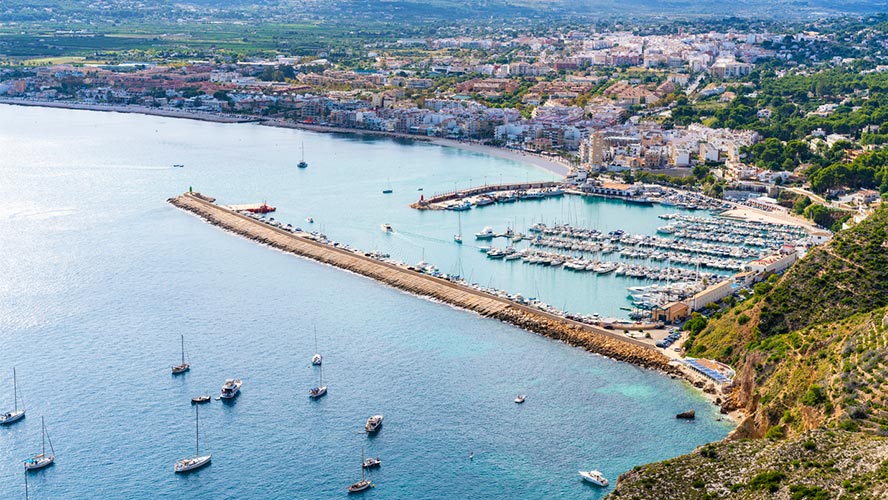
Altea, whitewashed houses facing the sea
It isn’t easy to be objective in terms of beauty when you have sentimental ties with a certain place, and this is the exact problem we have with Altea. We can’t find a single fault with it. We encourage you to walk around its charming old town and take a look at the beautiful church of Nuestra Señora del Consuelo, which is very recognisable because it has two domes covered with blue tiles. One of the most beautiful panoramic views is from the Cronistas (or Muralla) viewpoint, from which you can see the town, the port, and the cliffs of Sierra Helada. Other interesting places are the promenade, the street market, and the beaches of Roda, Espigó, and Olla.
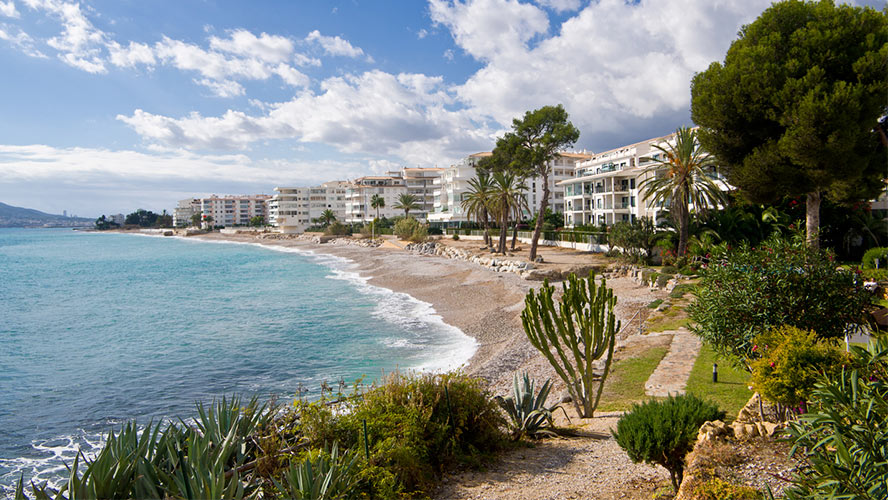
Guadalest, hidden among the mountains
You only have to go inland to find one of the places you must visit in Alicante. Guadalest, one of the most beautiful villages in Spain, surprises you with its small historic quarter, secluded but charming, which comes into view after crossing a stone tunnel. Almost around every corner you’ll find a monument, a museum (there are eight) or a corner where you can take a photo.
You can also walk along the Calvario path, which starts in the historic centre and offers beautiful views, and follow a circular route around the Guadalest reservoir.
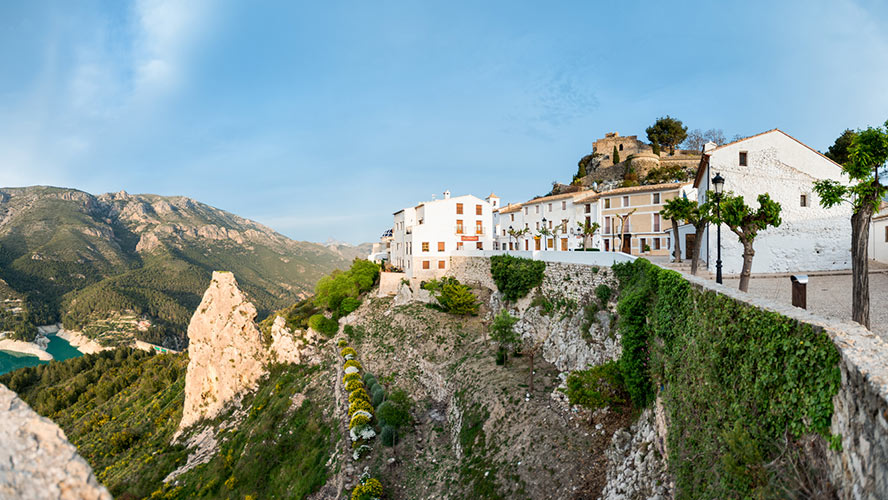
Villajoyosa, a lively sea town
Villajoyosa, some 30 kilometres from Alicante, has a lot to offer visitors. La Vila Joisa (as it’s called in Valencian) is a safe place to enjoy a getaway with plenty of walks, monuments, and the beach. Although it still maintains part of its fishing philosophy, it’s now mainly dedicated to tourism, so there’s no shortage of gastronomic options or activities organised in the town.
Make a note in your travel diary of the following spots: the city walls, the church of Nuestra Señora de la Asunción, the Arsenal quarter, with its little colourful houses, Vilamuseu, and the Casa Museo La Barberá dels Aragonés. And, of course, don’t forget to visit the chocolate museums and the town’s beaches.
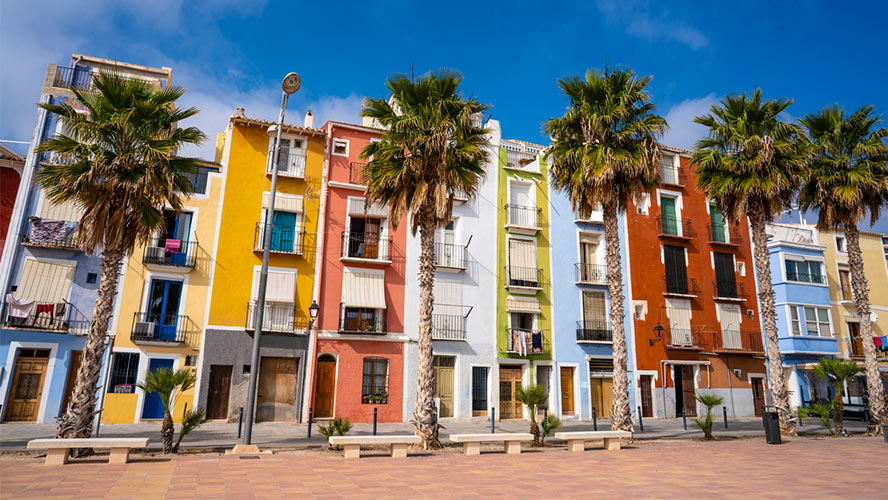
VISIT THE MOST BEAUTIFUL BEACHES IN ALICANTE
Alicante’s coastline has beaches that are a must on a trip to Alicante and others that, even if they don’t fall in this category, are so beautiful that it’s worth admiring them while strolling or sailing along the coast. Make a note of this list of beaches in your diary.
Postiguet Beach, next to Alicante
Located next to the port and at the foot of the castle of San Bárbara, Postiguet beach is an urban sandy area in the capital of Alicante. It’s just under a kilometre long and is a favourite among families with children due to its calm, crystal-clear waters. Its location next to the seafront promenade (Paseo de la Explanada) is ideal for combining swimming in the Mediterranean with a visit to a terrace, a restaurant or the Alicante marina.
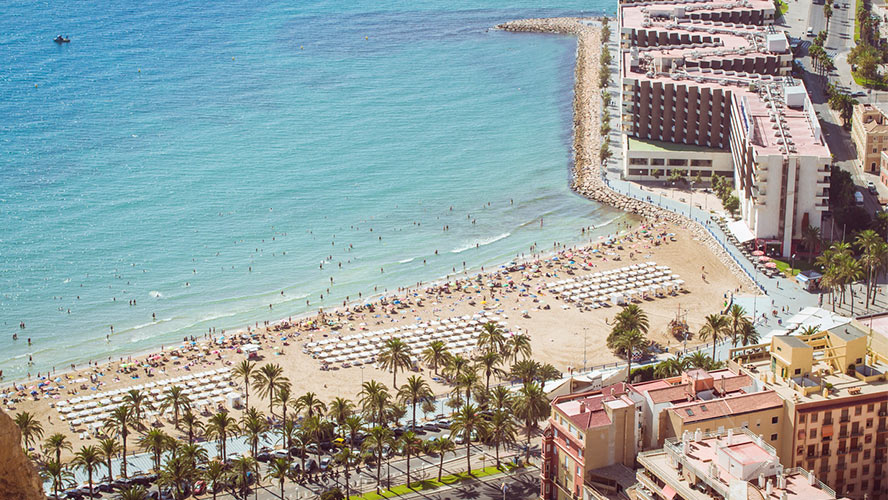
San Juan beach, a beach for everyone
San Juan beach, some eight kilometres from Alicante, is an ideal place to unwind thanks to its golden sand and crystal-clear waters. In its 3-kilometre stretch, you’ll have the opportunity to take a stroll and enjoy all the amenities it provides, whether you want to rent sun loungers or equipment to practise water sports. Dotted throughout its long shore, you’ll also find many restaurants where you can enjoy yourself, as well as several children’s areas. If your trip coincides with the night of San Juan, you’ll have the opportunity to see the traditional bonfires on the beach.
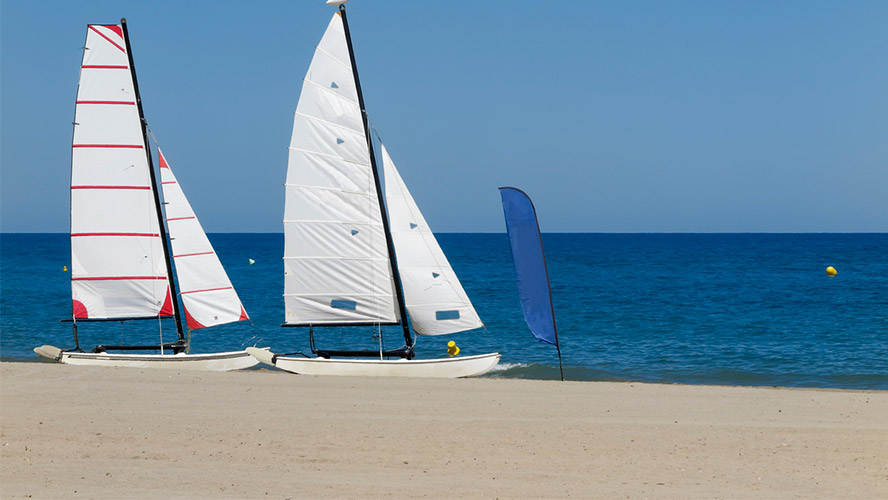
Cala Granadella, a little dream
Cala Granadella, a bay-shaped beach, is one of the most charming corners of the coast of Jávea. Sheltered from the wind and waves, it’s an ideal cove for enjoying the seabed while snorkelling or diving. As it’s small, only about 200 metres long, in the high season it can be a little crowded. There you’ll find essential amenities for swimmers, such as showers, toilets, lifeguards, and restaurants where you can have a bite to eat without having to go anywhere else.
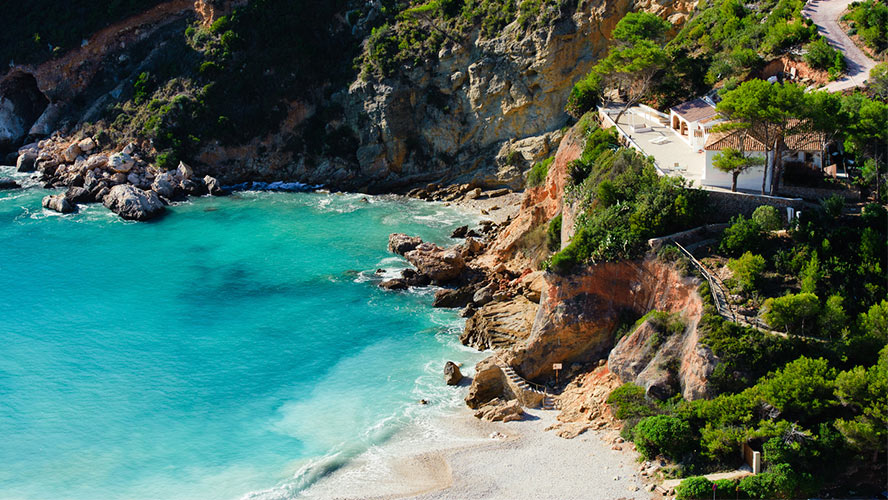
Moraig cove, wild and hidden
On the coast of Alicante, you’ll find spectacular sandy beaches that are ideal for swimming, as well as very special coves such as Moraig cove, which is located in Benitatxell, between Xàbia and Moraira. This cove is unique because of the rock formations that surround it. There, you’ll find Los Arcos cave, where the sea enters through its three arches. You can visit the cave, always making sure you do so with care, and even dive into its underground passages.
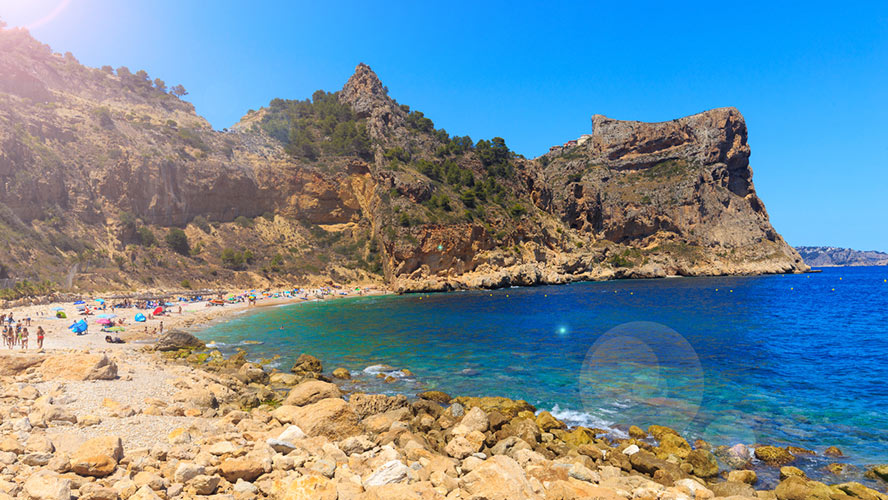
Albir beach, accessible and delightful
Albir beach is made up partly of sand and partly of pebbles and stones. It’s located in the town of Alfaz del Pi and combines everything (or almost everything) that tourists could wish for, as it’s next to the town centre that you can get to directly from here. In addition, along its 550-metre stretch you’ll find deep areas and others more suitable if you’re travelling with children. It also has all kinds of amenities for visitors, such as showers, surveillance, toilets, rental of water sports equipment, etc. And the good news is that it’s rarely packed.
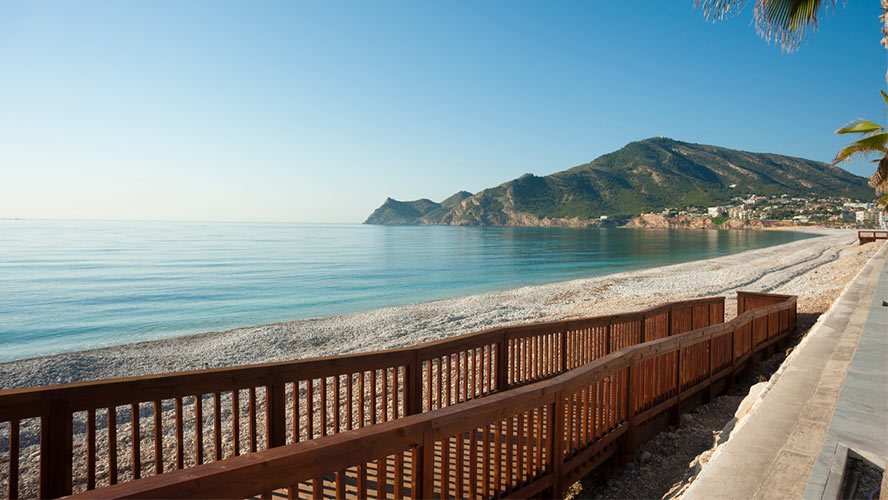
ALICANTE’S NATURAL ENVIRONMENT, OPEN-AIR ROUTES
You’ve surely asked yourself what you can see in Alicante or in the surrounding area other than going to the beach or to the villages, and the answer is that there’s a lot to do in this province. Here we have selected some natural areas, which are considered places of interest, but we suggest that you try to do activities in the surrounding nature to enjoy them even more.
Routes in the Montgó Nature Park
This protected park on the coast of Alicante is the most surprising natural space on the coast. It’s situated between Denia and Jávea, around the Montgó Massif, and its historical and natural significance is unquestionable.
The best way to get to know the Montgó Nature Park, one of the must-visit places in Alicante, is to go on some hiking routes. Amongst the most popular is the Cova de L’Aigua-Racó del Bou Route, which is 3.5 kilometres long and of medium difficulty. A little easier is the Camí de Colonia-Cova del Gamell route, which is five kilometres long. Be sure to ask for the route guide at the park’s interpretation centre to be on the safe side.
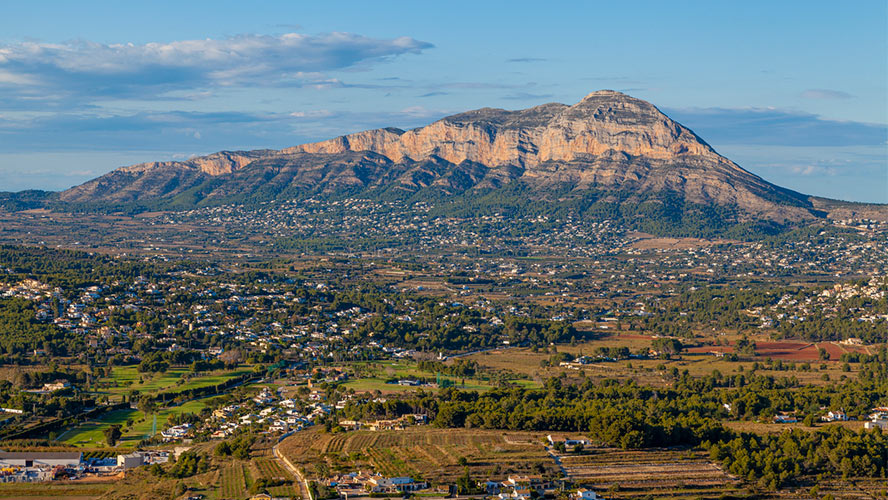
Cabo de la Nao and its secrets
You may think that a geographical feature, a cape in this case, isn’t overly interesting, but wait until you walk around Cabo de la Nao. This point is the first to greet the sun every day on the Iberian Peninsula and it also hides beautiful surprises in the form of beaches and coves. The best way to admire its silhouette is from the sea, on board a boat, which also allows you to reach some of its most secluded beaches, go snorkelling or visit underwater caves. If you don’t like sailing, another option is to take a trip around its viewpoints.
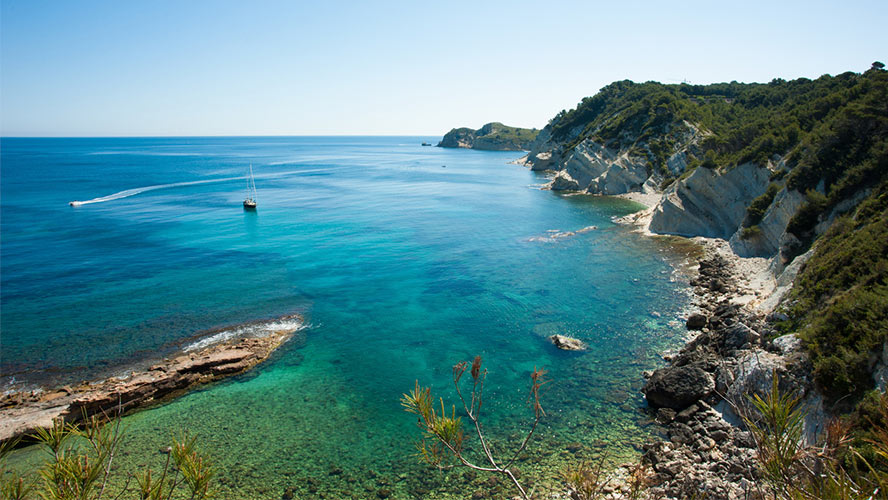
Cova Tallada, a surprising visit
Located in the Montgó Nature Park, Cova Tallada is a protected area situated on the cliffs of the San Antonio cape, which means that access is regulated. It’s an ideal day trip from Denia, but bear in mind that it’s not a place to visit in a sarong and flip-flops. The way to get there, although some might think it’s easy, requires footwear suitable for hiking and for you to take a lot of care in the cliff area. That said, we do recommend you visit it, but do so respecting the environment. The cave is at sea level, and is around 15 metres high and 75 metres wide. You can snorkel and enter the cove on a kayak.
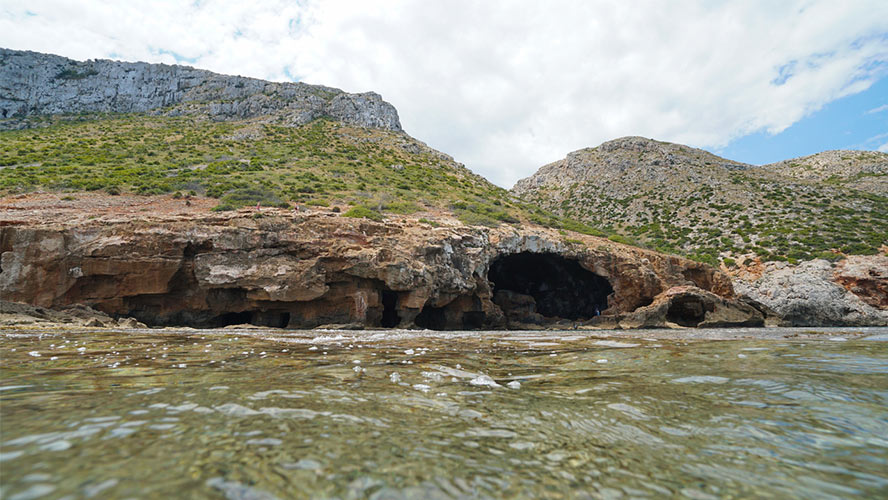
Tabarca Island, the only inhabited island in the region
Tabarca Island is the only inhabited island in the Valencian Community. It’s situated opposite the city of Alicante, around 11 nautical miles away, and has a long and interesting history. It was a refuge for Berber pirates for a long time, until King Carlos III, in the 18th century, decided to fortify it. In fact, its walls have been declared a Historic-Artistic Site and an Asset of Cultural Interest. People usually visit the city by taking a day trip by boat from the port of Alicante. Once there, the usual thing to do is to enjoy the beach, visit the port, and eat caldero, which is the island’s typical fish and rice-based dish.
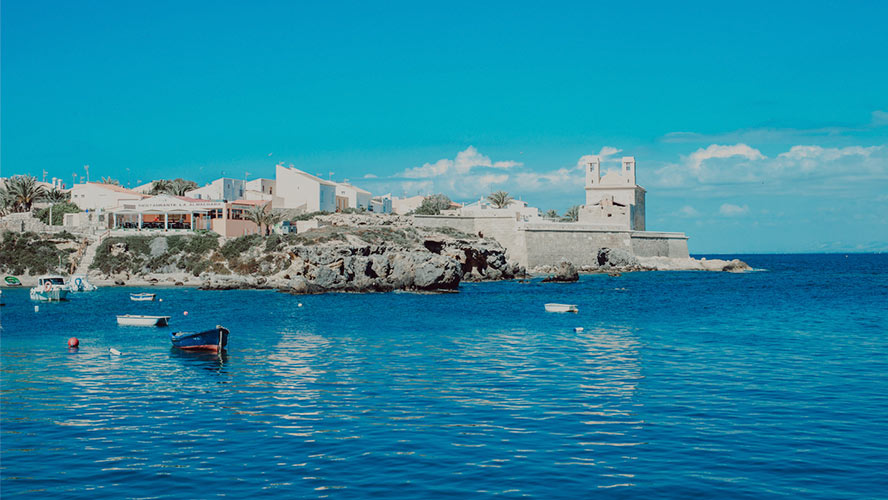
Fuentes del Algar, a splash of nature
Just 16 kilometres from Benidorm is one of the most beautiful landscapes in Alicante, one of those places you have to see in the province. The so-called Fuentes del Algar (Fonts d’Algar), in Callosa d’en Sarrià, are a group of waterfalls connected to several rivers that form beautiful natural pools. We suggest that you try to go when it is less crowded, early in the morning or during the week.
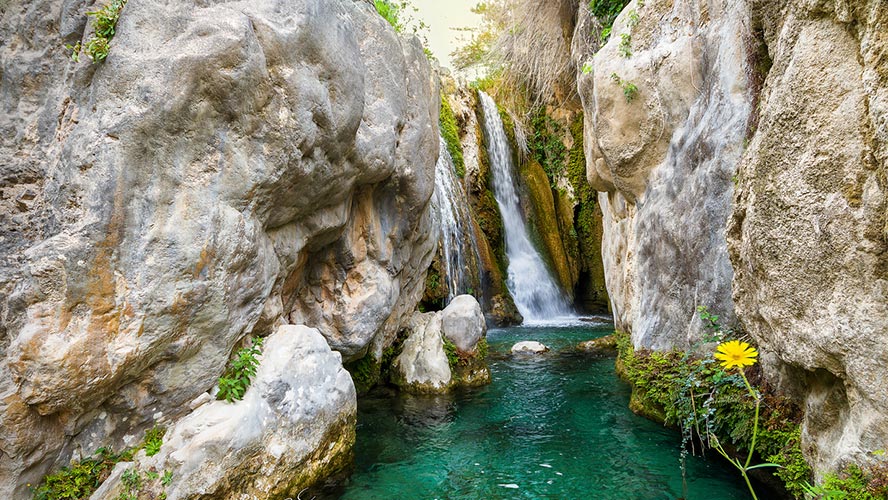
Peñón de Ifach, the watchtower peak
We know the Peñón de Ifach as the promontory of Calpe, but around it there’s a whole protected area, called the Peñón de Ifach Natural Park, which lends itself to be explored. An ideal way to get to know it is to take a route along the signposted path that leads to its summit. Across its almost five kilometres there are easy stretches at the beginning and more difficult ones towards the end. It’s well worth the effort because a spectacular panoramic view awaits you at the top.
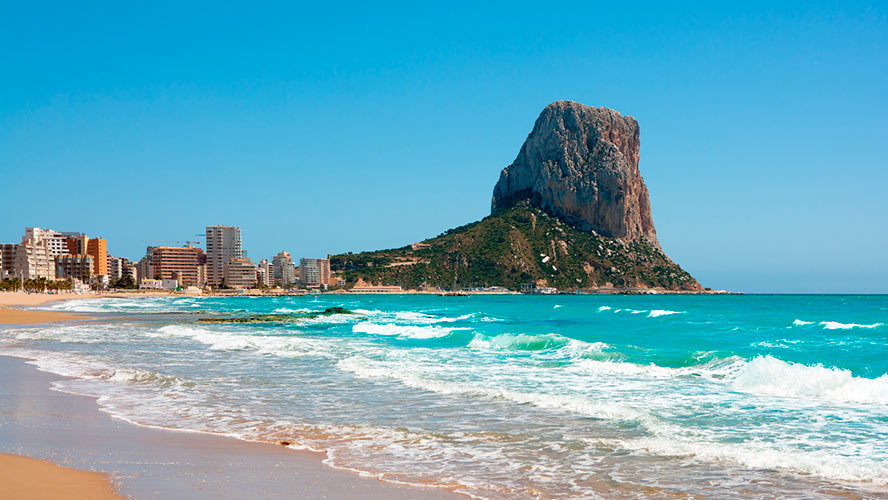
Serra Gelada, Benidorm’s mountain range
Serra Gelada, or Sierra Helada Natural Park, is a protected area that spans several municipalities (Benidorm, Alfaz del Pi, and Altea) and has a bit of everything, from flora reserves to cliffs and fossil dunes. The whole area can be explored through hiking routes or from the sea, as the beauty of the cliffs is best admired from a boat. Lastly, if you’re a diving enthusiast, in this marine reserve you will find a good number of places to dive, such as Mitjana Island, La Llosa Island, the Elephant Cave, the Dwarf’s Cave, and the Los Arcos area.
This mountain range is the perfect complement to a beach holiday.
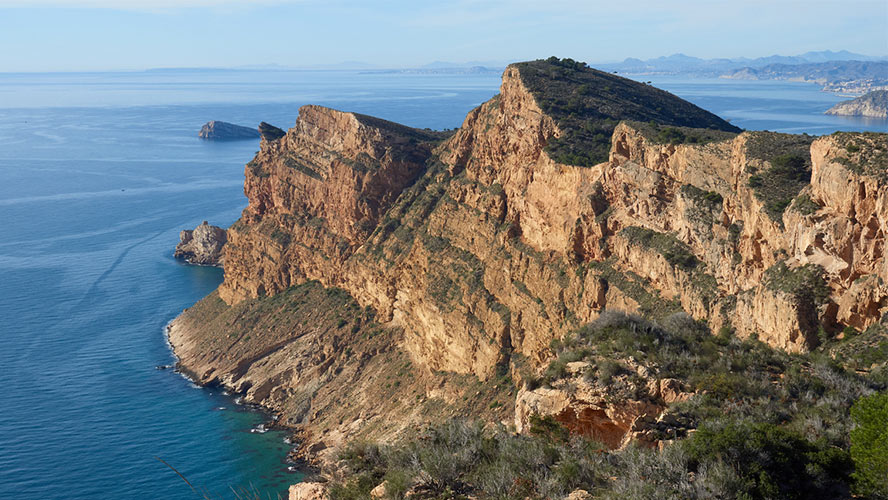
At Barceló Experiences you can continue your journey through the charms Spain has to offer, by visiting our complete tourist guides to other must-see destinations such as Madrid, Cadiz, Asturias, Valencia, Seville or Granada.




































































